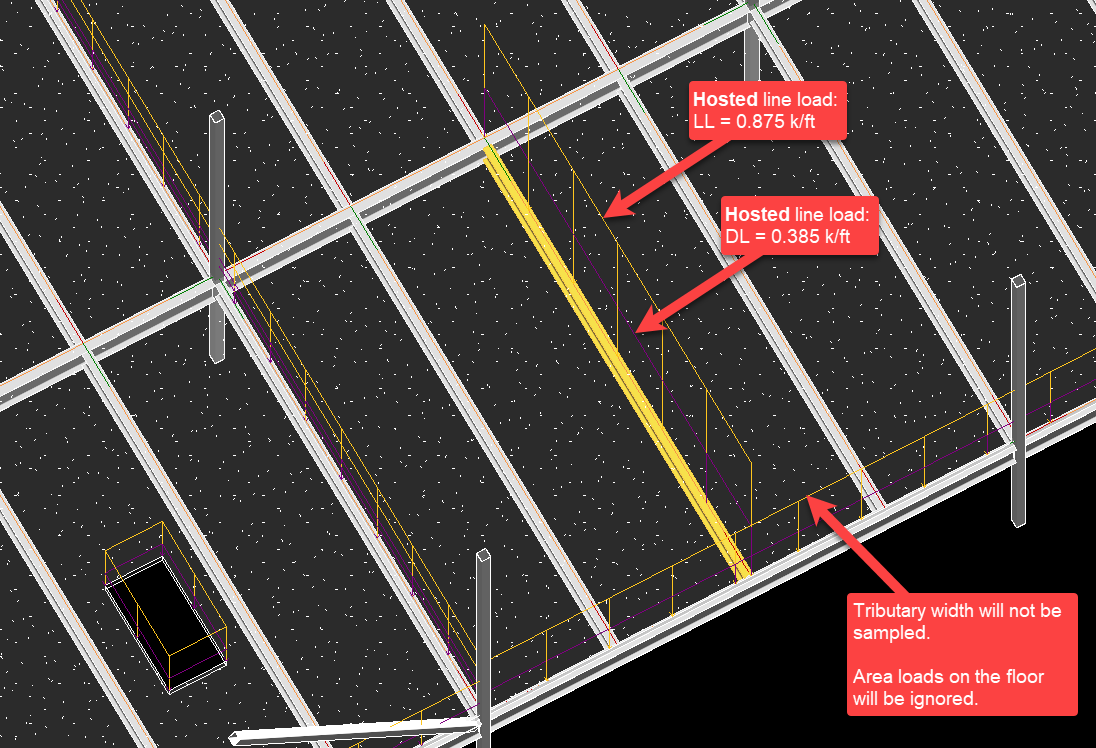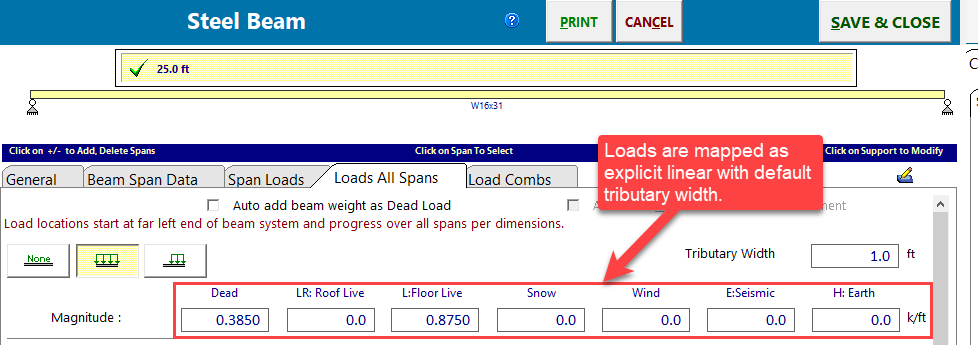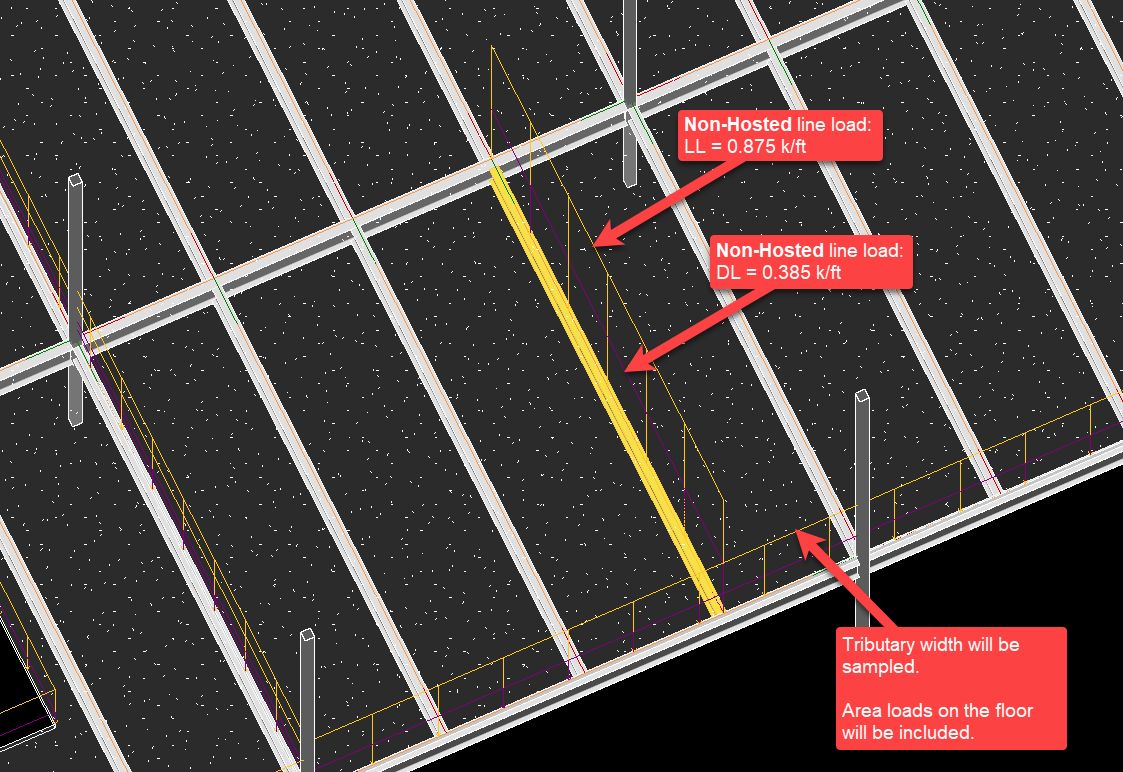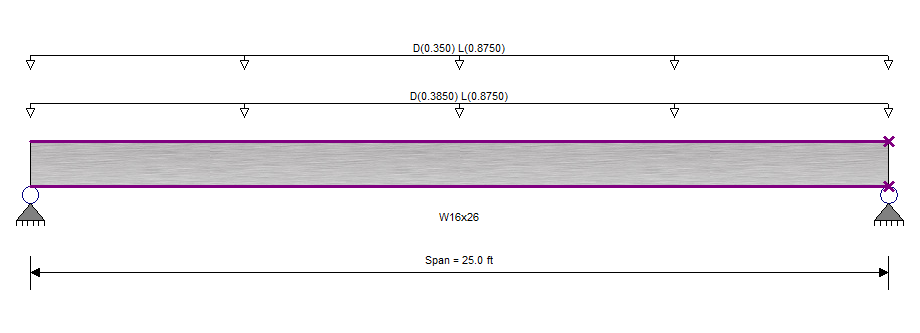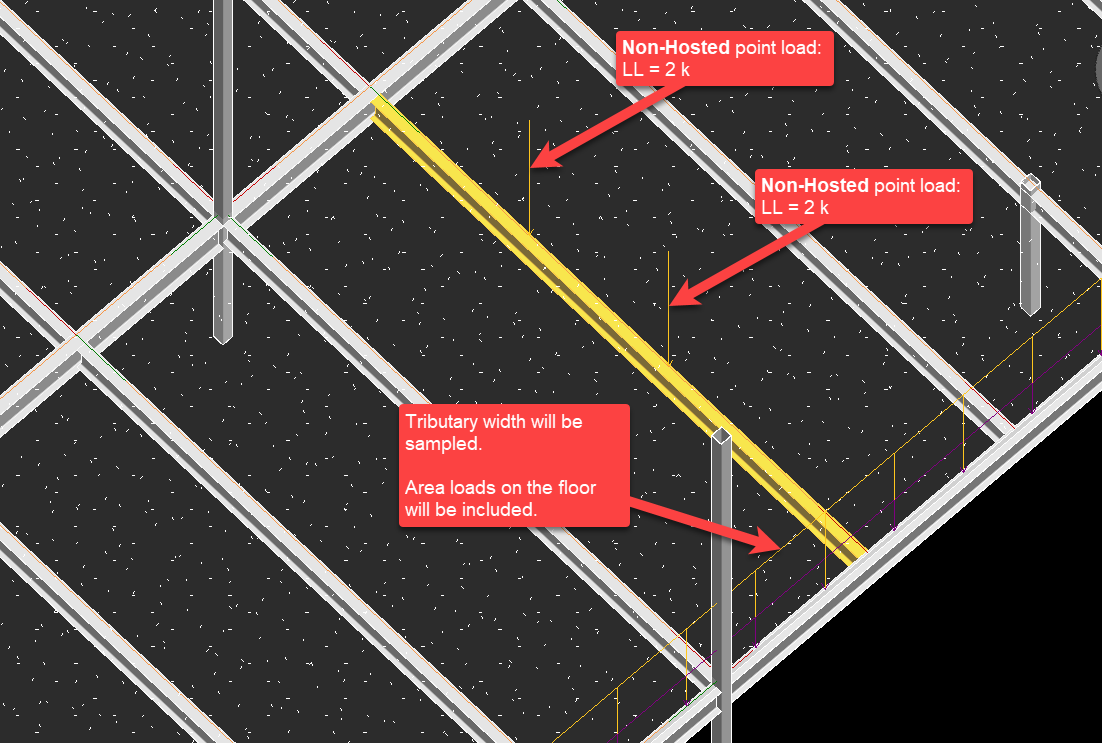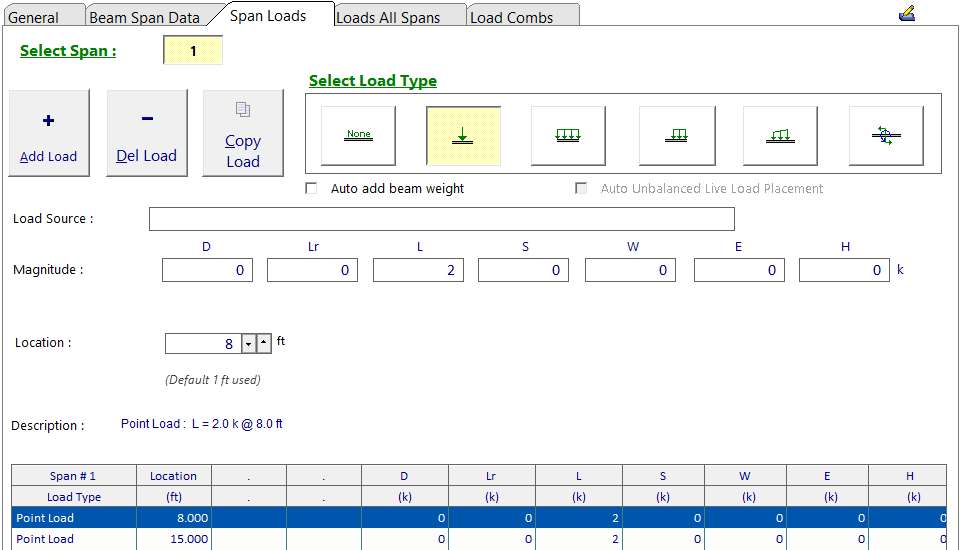ENERCALC for Revit allows the use of linear loads and point loads when hosted area loads are present. These other loads may be additive with the area load effects, or may be used to override the area load effects if desired. The following rules govern the superposition:
Other Load Found: |
Load Mapping to SEL: |
||
Type: |
Hosting: |
Tributary Width Sampled? |
Loads Additive? |
|
|
|
|
Point Load |
Non-Hosted |
Yes |
Yes |
Point Load |
Hosted |
Yes |
Yes |
Point Load |
Linked Load |
Yes |
Yes |
Line Load |
Non-Hosted |
Yes |
Yes |
Line Load |
Hosted |
No |
No |
As indicated above, the presence of a Hosted line load acts as a “master override”. Placing Hosted loads with explicit magnitudes allows the user to bypass any force effects from the floor area loads. This makes it possible to achieve a very specific alternate loading for design on a single beam without being forced to modify physical geometry or the overall loading of the floor system. All loads of other types are mapped directly to the ENERCALC SEL calculation in addition to the floor area loads and are superimposed.
